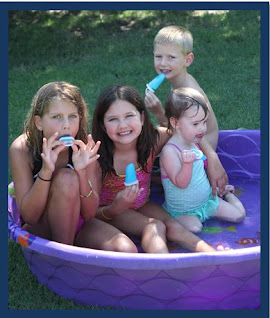Were you aware that there are many unusual ways to use shaving cream besides using it for shaving? Did you know that you could...
1) Clean jewelry with it? Spray it on your jewelry and use a soft “old” toothbrush to get off the grime. Rinse with water.
2) Give chrome faucets a brilliant shine? Apply the shaving cream to a sponge and rub it on the faucet. Then wipe it off with a damp cloth.
3) Easily remove paint from your hands? Rub the shaving cream onto your hands; then rinse it off with soap and water.
4) Remove carpet stains? Blot the soiled area with a damp sponge and then spray on the shaving cream. Wipe clean with a damp sponge and let the area dry. It will also work on various clothes stains.
5) Clean vinyl lawn furniture? Spray the lawn furniture with the shaving cream and wipe the grubby areas with a damp rag. Rinse when finished.
Item #5 is what I do each summer. Our lawn furniture sets out over the winter on our patio and even though it is covered, it is filthy when summer comes. I always go to the store and purchase the cheapest shaving cream I can find. (Here, Barbasol sells for about $.89 a can. Depending on the number of grandchildren coming over, determines how many cans I purchase. This year, it was three.) No matter their age, this is one activity that they all look forward to because it is messy!
I write the child’s name on their can of shaving cream and then assign them a piece of furniture to clean. When everyone is done scrubbing and wiping, we get out the garden hose to spray off the remaining shaving cream, and frequently we end up spraying each other.
But what happens to the leftover shaving cream? I think the pictures say it all!
3) Easily remove paint from your hands? Rub the shaving cream onto your hands; then rinse it off with soap and water.
4) Remove carpet stains? Blot the soiled area with a damp sponge and then spray on the shaving cream. Wipe clean with a damp sponge and let the area dry. It will also work on various clothes stains.
5) Clean vinyl lawn furniture? Spray the lawn furniture with the shaving cream and wipe the grubby areas with a damp rag. Rinse when finished.
Item #5 is what I do each summer. Our lawn furniture sets out over the winter on our patio and even though it is covered, it is filthy when summer comes. I always go to the store and purchase the cheapest shaving cream I can find. (Here, Barbasol sells for about $.89 a can. Depending on the number of grandchildren coming over, determines how many cans I purchase. This year, it was three.) No matter their age, this is one activity that they all look forward to because it is messy!
I write the child’s name on their can of shaving cream and then assign them a piece of furniture to clean. When everyone is done scrubbing and wiping, we get out the garden hose to spray off the remaining shaving cream, and frequently we end up spraying each other.
But what happens to the leftover shaving cream? I think the pictures say it all!









